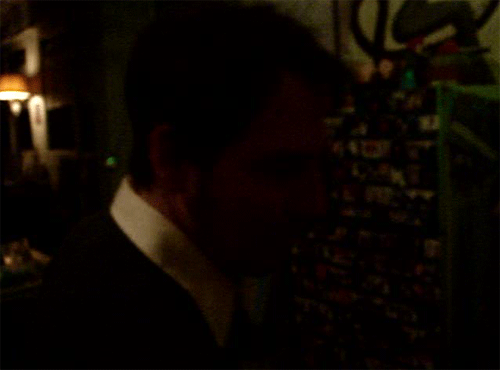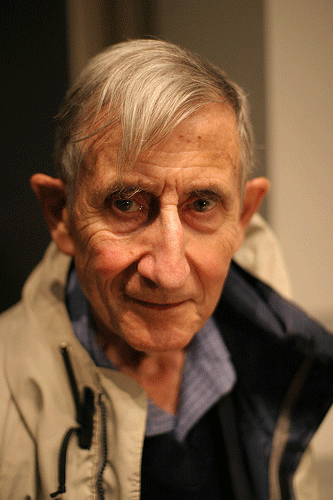April 10, 2007
We Shall Learn to Grow Trees on Comets.

I keep thinking about a conversation I had with Andrew Hahn. He said that he read the blog and was piqued by this post, where I mentioned something about a concern for beauty. The spectre of "mere formalism" haunts us in the artworld, the words seem to conjure each other.
But who doesn't have a standard of beauty? Even the "anti-aesthetic" is another aesthetic. As we talked like this for a bit, Andrew sheathed his blade.
Later, we talked about how art and how optimism or an art of affirmation is supremely difficult and the drift of the conversation was that optimism might very well be impossible. It is remarkable to me that history of all kinds: including art history itself and surely the ur-history of the torah/the bible... are a chain off peccadillos. Trouble. Picaros, the picaresque, picaroon. Bad things happening, people making tragic choices. Art is linked to an idea of revolution, the upsetting of the applecart, changing the world in some way. We talked briefly about the revolution post, about how revolution can also be so facile as to effect style over substance with revolutionary trope.
I wanted to lay out the idea that given how revolution can be embodied in so many ways, that while it can be dangerous in terms of mortal safety (weaponized irony and bloody revolution), it is central to who we are as artists in that every time we make art, we must break the model of the last time we made art... even if it is just a little fracture in the facture... to allow the new to rise up through the cracks. Different people have different ways of crack-making whether by carefully stressing or smashing to smitherenes.
I wanted to talk about the existence and use of artifice in argumentation and conceptualization, how pervasive it is, how necessary it is, integral to the formation of idea and theory... about how artifice is the stuff of trangression, a kind of exaggeration, Picasso's lie that tells the truth, and how I think we have lost sight of that by and large.
By that time, the evening was over for me and I had to jet home. That was Saturday evening and my head has been wrapping itself around this topic like a python about too large of a meal. This interview of Freeman Dyson just barely seems to scratch the itch in the meantime:
Benny Peiser: In a chapter about the scientific revolutions in modern physics and mathematics, you describe the deep intellectual confusion in Weimar Germany in the aftermath of the First World War. You portray a society troubled by a mood of doom and gloom, a milieu that was conducive for scientific revolution as well as political upheaval. Unmistakably, the Great War set off a major shift in German thought, from the idea of progress and technological confidence to cultural pessimism and apocalypticism. As we know, the consequences of this mood of despair was calamitous. Do you see any comparison with the gloomy frame of mind that seems to be on the increase among many Western scientists today?
Freeman Dyson: Yes, the western academic world is very much like Weimar Germany, finding itself in a situation of losing power and influence. Fortunately, the countries that matter now are China and India, and the Chinese and Indian experts do not share the mood of doom and gloom. It is amusing to see China and India take on today the role that America took in the nineteen-thirties, still believing in technology as the key to a better life for everyone.
Benny Peiser: One of your most influential lectures is re-published in your new book. I am talking about your Bernal Lecture which you delivered in London in 1972, one year after Desmond Bernal's death. As you point out, the lecture provided the foundation for much of your writing in later years. What strikes me about your remarkably optimistic lecture is its almost religious tone. It was delivered at a time, similar to the period after World War I, when a new age of techno-pessimism came to the fore, reinforced by Hiroshima and Vietnam.It is in this atmosphere of entrenched techno-scepticism and environmental anxiety that you advanced biological, genetic and geo-engineering as industrial trappings of social progress and environmental protection. At the height of ecological anxiety, in the same year as the Club of Rome proclaimed the "Limits to Growth," you envisaged endless technological advancement, terrestrial progress and the greening of the galaxy, famously predicting that "we shall learn to grow trees on comets."
At one point towards the end of your lecture, you christen your speech a "sermon." Indeed, your entire lecture reads as if it was written for a tormented audience searching for a glimmer of hope. In his book "The Religion of Technology", David Noble claims that the whole history of technological innovation and advancement has been primarily a religious endeavour. Noble claims that even today your ideas of technological solutions to terrestrial problems constitute in essence a religious conviction. How much of your cosmological view of the world has indeed been shaped by Judeo-Christian traditions? And do you see that there is an inherent link between your religious and your philosophical optimism?
Freeman Dyson: It is true that the tradition of Judeo-Christian religion is strongly coupled with philosophical optimism. Hope is high on the list of virtues. God did not put us here on earth to moan and groan. As my mother used to say, "God helps those who help themselves."
I am generally optimistic because our human heritage seems to have equipped us very well for dealing with challenges, from ice-ages and cave-bears to diseases and over-population. The whole species did cooperate to eliminate small-pox, and the women of Mexico did reduce their average family size from seven to two and a half in fifty years. Science has helped us to understand challenges and also to defeat them.
I am especially optimistic just now because of a seminal discovery that was made recently by comparing genomes of different species. David Haussler and his colleagues at UC Santa Cruz discovered a small patch of DNA which they call HAR1, short for Human Accelerated Region 1. This patch appears to be strictly conserved in the genomes of mouse, rat, chicken and chimpanzee, which means that it must have been performing an essential function that was unchanged for about three hundred million years from the last common ancestor of birds and mammals until today.
But the same patch appears grossly modified with eighteen mutations in the human genome, which means that it must have changed its function in the last six million years from the common ancestor of chimps and humans to modern humans. Somehow, that little patch of DNA expresses an essential difference between humans and other mammals. We know two other significant facts about HAR1. First, it does not code for a protein but codes for RNA. Second, the RNA for which it codes is active in the cortex of the human embryonic brain during the second trimester of pregnancy. It is likely that the rapid evolution of HAR1 has something to do with the rapid evolution of the human brain during the last six million years.
I am optimistic because I see the discovery of HAR1 as a seminal event in the history of science, marking the beginning of a new understanding of human evolution and human nature. I see it as a big step toward the fulfilment of the dream described in 1929 by Desmond Bernal, one of the pioneers of molecular biology, in his little book, "The World, the Flesh and the Devil: An Enquiry into the Future of the Three Enemies of the Rational Soul". Bernal saw science as our best tool for defeating the three enemies. The World means floods and famines and climate changes. The Flesh means diseases and senile infirmities. The Devil means the dark irrational passions that lead otherwise rational beings into strife and destruction. I am optimistic because I see HAR1 as a new tool leading us toward a deep understanding of human nature and toward the ultimate defeat of our last enemy.

(Blued bolded italics and link mine) Posted by Dennis at April 10, 2007 4:50 PM
Leave a comment